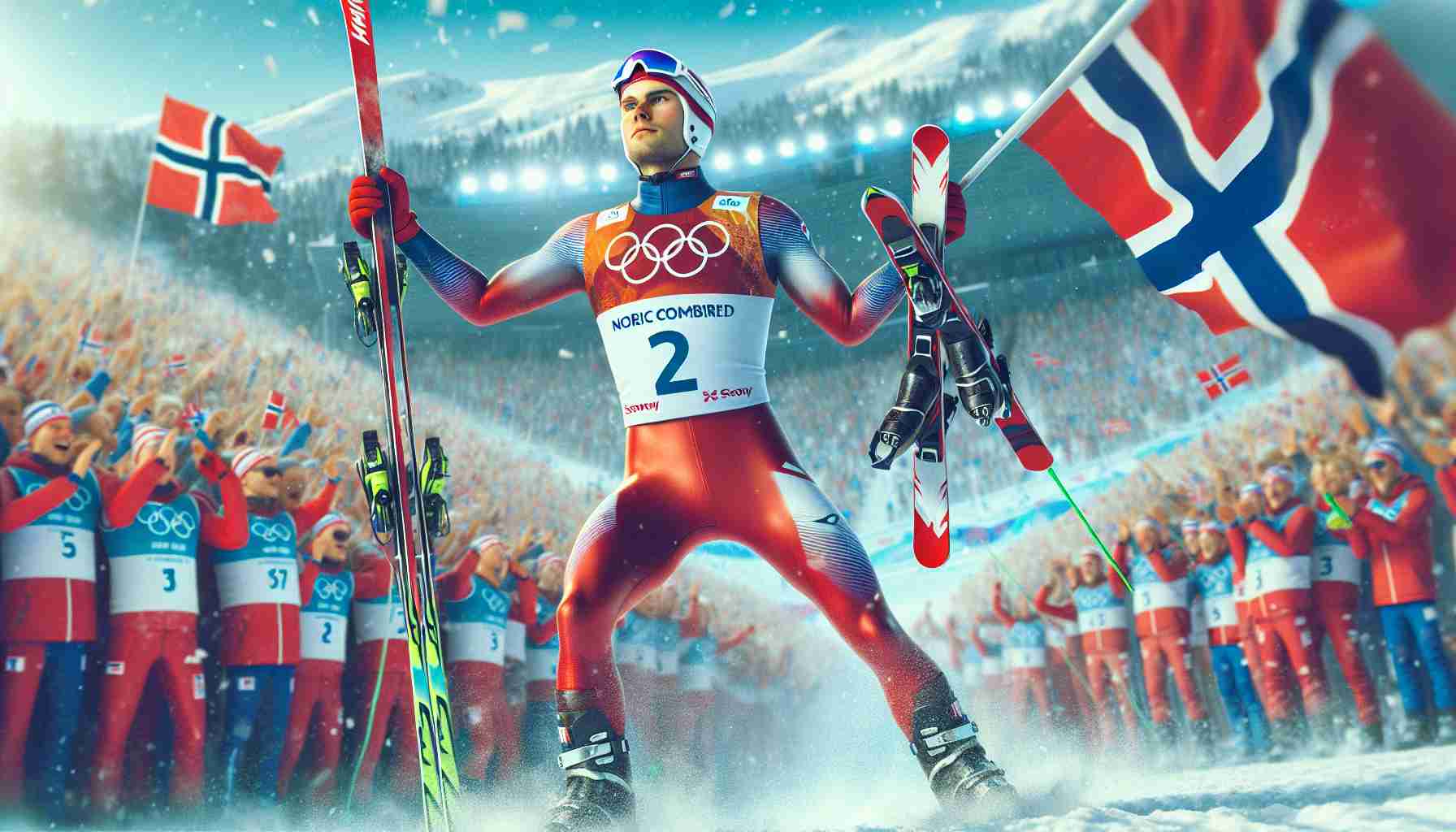Norwegian Triumph in Ramsau
Ida Marie Hagen continues her remarkable winning streak, recently clinching her seventh consecutive victory in the women’s Nordic Combined World Cup held in Ramsau, Austria. This thrilling event featured a mass start in cross country skiing, followed by ski jumping, but weather conditions forced a change in plans.
Due to challenging winds and snowfall, the ski jumping portion was canceled, leading officials to rely on the Provisional Competition Round (PCR) from the previous day. Despite the setback, Hagen showcased her exceptional talent by finishing first in the cross country race. Her impressive performance, along with a third-place finish from the PCR jump, secured her 12th career victory. Haruka Kasai from Japan took second place, while Finland’s rising star, Minha Korhonen, rounded out the top three.
The cancellation of the jump caused disappointment for Gyda Westvold Hansen, the reigning World Cup champion, who finished second in the cross country but faced disqualification due to a suit violation.
On the men’s side, Jarl Magnus Riiber displayed his prowess, overcoming a sixth-place finish in the cross country with a stellar jump performance. He triumphed over teammate Jens Luraas Oftebro and Estonia’s Kristjan Ilves, marking his second win of the season and extending his overall career victories to a remarkable 83.
Both the men’s and women’s events are set to conclude their year in Ramsau, promising more excitement for Nordic combined fans.
Navigating the Nordic Combined Landscape: Insights on Recent Competitions and Future Trends
Norwegian Triumph in Ramsau
The Nordic Combined World Cup event in Ramsau, Austria, has garnered attention not only for its thrilling competition but also for significant developments in the sports of ski jumping and cross-country skiing. The recent achievements of athletes such as Ida Marie Hagen and Jarl Magnus Riiber underscore the growth and popularity of Nordic sports, bringing new insights into performance trends, athlete training, and competition formats.
Performance Insights: Dominance of Top Athletes
Ida Marie Hagen’s victory, marked as her seventh consecutive win in the women’s category, is a testament to her dedication and skill. With this victory, she has now reached 12 career wins. Hagen’s ability to adapt to adverse weather conditions demonstrates the mental and physical resilience required in this hybrid sport. Notably, her third-place finish in the Provisional Competition Round indicates her well-rounded capabilities across both disciplines.
On the men’s side, Jarl Magnus Riiber’s solid performance has solidified his status as one of the sport’s elites. With 83 career victories, he is shaping the future of Nordic combined skiing. Athletes like Riiber are not only excelling personally but are also setting benchmarks that inspire younger generations.
Trends in Nordic Combined Events
As Nordic combined competitions evolve, several trends have emerged:
– Increased Focus on Athlete Versatility: Athletes are being trained to excel in both cross-country skiing and ski jumping, emphasizing the need for versatility in skill sets.
– Adapting to Weather Conditions: The recent cancellation of ski jumping events in Ramsau due to weather highlights the necessity for flexible competition formats. Organizers are exploring new strategies to ensure events proceed, even under less-than-ideal conditions.
– Growing International Competition: With athletes like Haruka Kasai from Japan and Minha Korhonen from Finland joining the podium, the globalization of the sport is evident. This competitive diversity enriches the tournament landscape and fosters a broader fan base.
Future Predictions for Nordic Combined
Looking ahead, the Nordic combined sport is poised for several significant changes:
– Increased Investment in Training Facilities: Countries like Norway, Japan, and Finland are expected to invest more in state-of-the-art facilities that enhance training quality, enabling athletes to perform at peak levels in various conditions.
– Enhanced Technology for Performance Analysis: The integration of advanced technology—such as wearables and performance analysis software—will allow athletes and coaches to strategize better and refine techniques critical for success.
– Growing Popularity and Viewership: As interest in Olympic and Winter sports grows, so does the potential for increased viewership and sponsorship opportunities in Nordic combined events.
Limitations and Challenges
Despite the growing excitement surrounding Nordic combined, challenges remain:
– Weather Dependence: The inherent unpredictability of weather can affect competition schedules and athlete performance, as seen in Ramsau.
– Equipment Regulations: The sport faces ongoing scrutiny regarding equipment specifications, particularly with athletes like Gyda Westvold Hansen facing disqualifications due to suit violations, highlighting the need for clarity and consistency in rules.
Conclusion
As the Nordic Combined World Cup nears its conclusion in Ramsau, the sport continues to capture international attention through impressive athlete performances and evolving competition formats. With emerging talent and increased participation, the future of Nordic combined looks bright. Fans and newcomers alike can anticipate more engaging competitions as the winter sporting calendar unfolds.
For more insights and updates on Nordic sports, visit FIS Ski.
